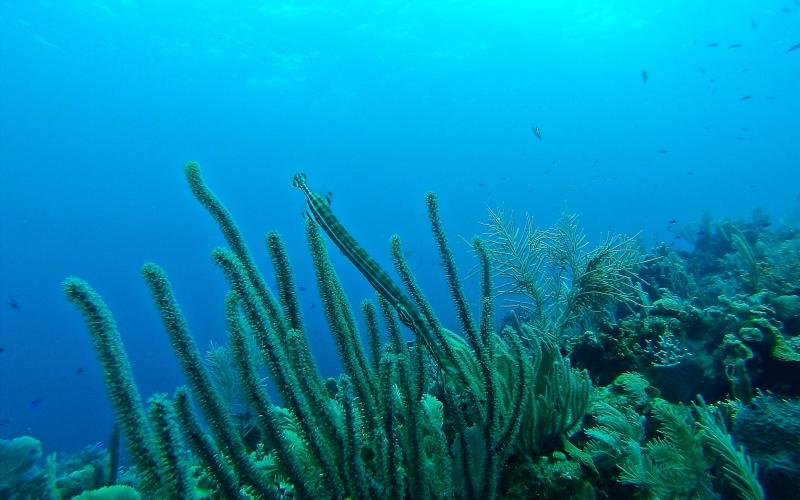Acidification of the deep Atlantic Ocean is accelerated by ocean circulation

Acidification of the deep Atlantic Ocean is accelerated by ocean circulation
The North Atlantic Ocean Circulation is a double-edged sword when it comes to ocean acidification. In the past, it has kept the North Atlantic Ocean less acidic – and more hospitable – than the Pacific Ocean. Today, the same circulation has the potential toconvey fast acidification to the ocean depth as climate change alters both the atmosphere and the surface ocean.
Perez, F.F., Fontela, M., et al. (2018) Meridional overturning circulation conveys fast acidification to the deep Atlantic Ocean. Nature, 554, 515-518.
Much has been written about the impacts of sea level rise under climate change.
However, an equally drastic transformation creeps from the ocean depth: ocean
acidification.
Ocean acidification starts with the mixing of atmospheric carbon dioxide (CO2) in the
surface ocean. Carbon dioxide reacts with water to produce carbonic acid. Carbonic acid,
in turn, separates into bicarbonate ions as well as stray hydrogen ions. The prevalence of
these stray hydrogen ions determines the acidity of the seawater; excessive hydrogen
ions make the surface seawater more acidic.
Compared to the surface ocean, the deep ocean is even more acidic. CO2 that dissolves in
the surface ocean descends into the ocean’s depth with dead biotic materials, and
accumulates there. Thus, ocean acidification is gradually happening from the bottom of
the ocean upwards.
Ocean acidification is accelerating as a result of climate change. In the surface ocean,
30% more hydrogen ions are present compared to preindustrial times. In the deep
ocean, the zone where seawater acidity becomes inhabitable is creeping upwards. In a
recent article published in Nature, researcher Fiz Perez from Spain’s Instituto
Investigaciones Marinas and colleagues warn that ocean acidification might be
happening even faster than we think.
Compared to other oceans in the world, the North Atlantic Ocean in particular possesses
a natural balancing mechanism that has helped it to slow acidification in the past.
There, oceanic circulation causes the less acidic surface water to constantly sink and mix
with the more acidic deep water. This process has kept the deep Atlantic Ocean in far
less acidic conditions than the north Pacific Ocean, where surface and deep waters are
segregated.
The naturally less acidic North Atlantic Ocean has become a safe haven calcifying
marine organisms. These marine organisms, such as shellfish and deep cold water
corals, detest acidic conditions. The acidic water corrodes their shells and skeletons.
Past a certain depth, the seawater is too acidic for these organisms to survive. In the
North Atlantic, cold water corals thrive in massive colonies as deep as 2000 meters
under the surface. By comparison, the same corals struggle to survive under 500 meters
in the Pacific.
Today, the surface water that descends into the ocean depth is becoming more and more
acidic. With more CO2 mixing, the Atlantic’s natural balancing mechanism, on which its
deep biotic communities rely on, could be weakened. Through computer modeling of
ocean monitoring data, the study by Perez and colleagues demonstrates that the very
ocean circulation which made the North Atlantic Ocean so benign for calcifying
organisms today also makes it more susceptible to changes in the surface ocean. In fact,
the rate at which the deep Atlantic Ocean is changing has exceeded previous
expectations. There, the lower limit of hospitable seawater zone is rising towards the
ocean surface at a rate of 10 to 15 meters per year.
The Pacific Ocean today – with its patchy, scarce deep coral coverage – offers us a
glimpse of the future of the North Atlantic. This research paper extends our
understanding of the urgency of climate change. It reminds us of the breadth of impacts
climate change has on every facet of the Earth’s biotic communities – even those that
live 2000 meters below the ocean’s surface.




